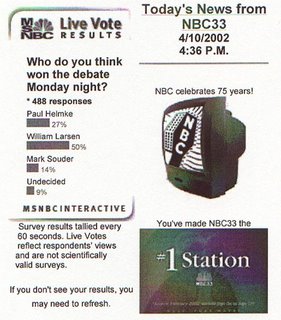75 year solvency period. Do we have time?
I have received many inquiries telling me that making small changes now can make Social Security solvent over the next 75 years. Is this true?
The “Cliff Effect”
Social Security actuaries calculate the actuarial balance of the OASDI programs as the present value of Social Security system expected revenues minus present value of scheduled expenditures over the period in question. Social Security actuaries are required by Congress to make long-term calculations, and the Office of the Actuary has typically used a 75-year valuation period for this long-term analysis.
The current system is not in actuarial balance. The 75-year shortfall is equivalent, on average, to 1.86 percent of the nation’s taxable payroll. This measure is a convenient shorthand for quantifying the magnitude of the financing shortfall, averaged over the valuation period.
A disadvantage is that this measure conceals trends in shortfalls. For example, the 1.86 percent actuarial deficit of the current system hides the fact that Social Security has surpluses today but will experience even larger shortfalls in 75 years exceeding 6 percent of taxable payroll.
Another disadvantage is that the 75-year time horizon is arbitrary since it ignores what happens to system finances in years outside the valuation period. For example, we could eliminate the actuarial deficit by immediately raising the payroll tax by 1.86 percent of payroll. However, as we move one year into the future, the valuation window is shifted by one year, and we will find ourselves in an actuarial deficit once more. This deficit would continue to worsen as we put our near term surplus years behind us and add large deficit years into the valuation window. This is sometimes called the "cliff effect" because the measure can hide the fact that in year 76, system finances immediately "fall off the cliff" into large and ongoing deficits.
Some think projecting out past 75 years has too many errors associated with it. How do you project interest rates, inflation, wage growth, life expectancy and more 75 years forward? How can the error be reduced and at the same time get a better idea of the magnitude of the problem?
The first error is in including the revenues of all workers who will not be beneficiaries by 2081. Why should those born after 2014 who pay payroll taxes not receive the same level of benefits as those during the 75 year period? Excluding all who are under age 67 in 2081, (born after 2014) from the cash flow analysis shows the shortfall to now be 6.3 percent of payroll, not the 1.9 percent reported. In reality the problem is over three times larger than reported.
However, even this would not be accurate or fair to those born in 2013. They would pay all their working years into Social Security only to receive full scheduled benefits for one year. Is this fair? We could improve the calculation by simply eliminating all workers contributions from the analysis that were born after 1981. These people will turn 60 in 2041, the current year social security is projected to be able to pay just 73% of scheduled benefits. The shortfall then increases to 10.9%. This is an increase of 103% over the current payroll tax! Using this method, the problem is over five times larger than reported and we have not changed the valuation period at all!
Now we could take it one more step, but I think you get the idea.
We could just as easy look at the cost associated with those over 65 now as well as the cost for those now 45 but in doing so use only those cash flows associated with those that age and over. This method does not require projecting past 75 years. In fact we could shorten the time frame to simply 36 years. This would consider paying simply those whom are currently beneficiaries scheduled benefits. The present value cost is an additional $4.5 Trillion or $28,125 per worker. The additional cost of paying baby boomers their benefits is $6.75 Trillion or $42,158 per worker and yet we still have not covered the cost of benefits for those under age 45.
The largest errors are not in the assumptions, but in the methodology used. The present value cost of paying scheduled Social Security benefits is a staggering $14 Trillion in addition to all the scheduled payroll taxes by employees and employers plus the trust fund. This is nearly twice the national debt.
The question to those under age 45 is; do you feel obligated to contribute $70,284 TODAY to those age 45 and over so they can receive full scheduled social security benefits? The question to those of us age 45 and over is; do you feel those under age 45 should contribute $70,284 to make up the shortfall in taxes we failed to pay to fund our combined social security benefits? Keep in mind you can pay this amount and still not receive full scheduled benefits because you fall outside the valuation time frame.
Social Security is the single largest tax for workers, has the largest unfunded liability, can pay but 73% of scheduled benefits and affects nearly every citizen. There is no painless solution.



0 Comments:
Post a Comment
<< Home